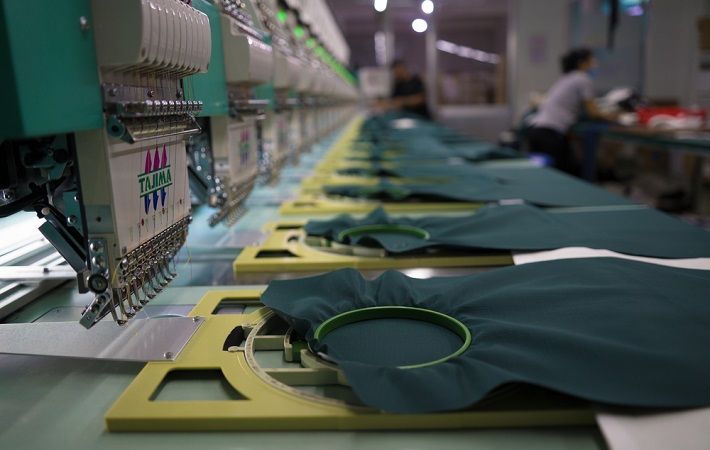
Vietnam has seen its apparel exports grow rapidly over the last few years compared to Bangladesh. “Vietnam has an FTA with the EU since 2019 which has helped it in increasing its exports. In addition, China is investing in Vietnam heavily for diversified and high value products. On the other hand, Bangladesh is still competing with its cheap labour cost,” Raihan Mahmud, marketing head at Bangladesh-based Tex Garment Zone told Fibre2Fashion. But Bangladesh has a better chance to race ahead “if exporters here can diversify their products and our country signs some new free trade agreements.”
MA Mannan, marketing head, TexTerry BD, also thinks that Bangladesh will continue its position as the second-largest garment exporter in the upcoming season because “Bangladesh is more mature than earlier. Its manpower is more capable and educated; there is increased backward linkage to spinning, weaving, knitting, dyeing, printing and confectioning facility. In addition, Bangladesh is more aware about delivery lead time. Moreover, the buyers also feel more comfortable to work in Bangladesh.”
As per Vietnam, the 4th wave of COVID-19 since April 2021 has seen long lockdown and stringent working protocols that have had a huge impact in slowing down the country’s economy. “Many factories have been forced to shut down in the wake of workers shortage and they are not able to fulfil their on-spot requirements. Curtailing the spread of the epidemic without effecting operations would be the biggest challenge that will decide if Vietnam can go back to its pace that led to beating Bangladesh,” according to Kamal Mangwani, vice general director of Premco Global Vietnam Co Ltd.
“Provincial governments have swung into action and we see some significant progress in inoculation and easing down on protocols. There is an overall sense of learning to live with the virus and the masses should soon get accustomed to the new normal, so we all can work together to build the new economy,” Mangwani adds. “I have very high hopes that with the backing of administration and great infrastructure, the industrial sector will zoom back to claim its position it very much deserves.”
Robin Razon Sakhawat, director of Bangladesh-based Robintex Group, feels Bangladesh will be slightly ahead of Vietnam by second quarter of 2021 and will continue to be ahead of Vietnam by small margin in 2022. He gives three reasons. “First, order situation is extremely strong at the moment with excess over capacity orders being placed with Bangladesh companies. Second, investment in value added processes are starting to bear fruit (For e.g. Bangladesh made large investments in digital textile print facilities and global buyers are shifting existing orders further from India and Vietnam in that sector). Third, our image of being a leader in factory safety and compliance allows us to attract new buyers, and customers like Disney who previously exited Bangladesh of compliance concern are now returning.”
MS Jalal, COO (Garment Division), Fatullah Fabrics Ltd, has a different opinion. “Vietnam mainly exports formal wear, jackets, critical work wear and some casual wear, which are costly in terms of quality and value. So, their revenue is better than Bangladesh which exports more low-priced casual wear and some formal wear in woven. So, if you take quantity as the parameter, Bangladesh is definitely producing more garments than Vietnam.”
Jalal too expects Bangladesh to remain the second-largest exporter as new textile facilities are being built with an overall investment of more than Tk 4,000 crore. “Besides, there are huge orders this year in both knit and casual wear, and we are using full capacity. So, there is no doubt that Bangladesh will be ahead of Vietnam in garment exports this year.”
Actually, there are opportunities for both Bangladesh and Vietnam to race ahead, as both regions have their own strengths, according to Rahul Varma, director-Sourcing & Quality Assurance at Ho Chi Minh City-based Global Hansoll. Global retailors and manufacturing companies have been reducing their dependence on China post-COVID. For Vietnam, its close proximity to China is beneficial for procuring raw material. Compared to Bangladesh, Vietnam benefitted more during the pre-COVID US-China trade war.
“I also see that most of the Chinese manufacturers have set up their production bases in north Vietnam due to high labour cost in their country, and it is easy to truck the raw materials from China to Vietnam as they share the border.
“On comparison, while Vietnam is now seen as a sourcing hub for value added products, and is strong in synthetics too, Bangladesh is mainly seen as a hub for low-cost manufacturing like cotton t-shirts. But at the same time Bangladesh is quite attractive sourcing hub globally with a strong presence in European market for apparel exports,” says Varma. Though both countries have their own advantages, Vietnam leads in terms of diverse products with educated and productive workforce. Bangladesh has lot of opportunities to develop from low-end to high-end products and skill development.
Fibre2Fashion News Desk (RKS)